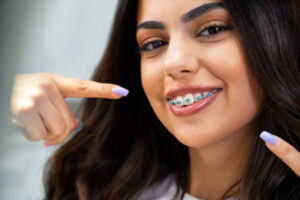Uncover the Truth Behind Common Dental Misconceptions
In our quest for pearly whites and a healthy mouth, we’ve all heard various pieces of advice, tips, and supposed facts about maintaining oral health. But how many of these are rooted in fact, and how many are merely myths? This blog post aims to debunk some of the most common dental myths and replace them with solid, dentist-approved facts.
1. The Dental Myth of White Means Healthy
One of the most prevalent dental myths is that white teeth automatically equal a healthy mouth. While a bright, white smile is often seen as desirable, it’s crucial to remember that dental health goes beyond appearances. Despite a shiny exterior, issues such as gum disease and cavities can be lurking unseen. Instead of obsessing over the color of your teeth, focusing on comprehensive oral hygiene is the key to genuinely healthy teeth and gums.
2. Brushing After Eating: The Right Timing Matters
Contrary to common dental myths, brushing immediately after eating can actually be harmful to your teeth, especially if you’ve consumed acidic foods or beverages. This is because acids weaken the tooth enamel, and brushing right away can cause damage. Wait at least 30 minutes after meals before brushing to protect your tooth enamel and maintain oral health.
3. Sugar and Tooth Decay: Dental Myths Say It’s About Exposure Time
The dental myth linking the amount of sugar you consume directly to tooth decay needs some clarification. It’s not just about how much sugar you eat; it’s about how long your teeth are exposed to it. Frequently sipping on sugary drinks or snacking on sweets throughout the day gives harmful mouth bacteria more time to produce tooth-damaging acids. Being mindful of when and how you consume sugar can help prevent tooth decay.
4. Dental Myths Around Children’s Oral Health
The belief that children don’t need to see a dentist until their adult teeth come in is one of the damaging dental myths out there. Children should have their first dental visit when their first tooth appears, usually around six months old. Early dental visits ensure baby teeth are growing correctly and instill the habit of regular dental visits.
5. The Dental Myth About Bleeding Gums and Flossing
Another common dental myth is that you should stop flossing if your gums bleed. This is usually a sign of inflammation or gum disease, indicating a need for better oral hygiene, not less. Regular brushing and flossing can help to reduce gum bleeding over time. Consult your dentist if bleeding persists.
 6. Dental Myths About Bad Breath
6. Dental Myths About Bad Breath
The notion that bad breath solely results from poor oral hygiene is a common dental myth. Although poor hygiene can cause bad breath, chronic bad breath can also signify more significant health issues, such as gum disease, diabetes, or sinus problems. If bad breath persists despite good oral hygiene practices, seek professional medical advice.
7. Regular Dental Check-ups: More Than Just Pain Management
One widespread dental myth is that dental check-ups are only necessary when you’re experiencing discomfort. However, many dental issues are painless until they become severe. Regular dental check-ups allow your dentist to detect potential problems early, saving you from pain, complex procedures, and high costs later on.
8. Aspirin and Toothaches: A Misunderstood Relationship
A common dental myth is that placing aspirin directly on a tooth will help alleviate a toothache. In reality, this can actually cause a chemical burn on your gums. Aspirin should be swallowed to alleviate pain effectively.
 9. Age is Just a Number: Braces for All Ages
9. Age is Just a Number: Braces for All Ages
Braces aren’t just for kids, contradicting popular dental myths. More adults than ever are seeking orthodontic treatment to improve their smiles and overall oral health. Discussing orthodontic options with your dentist or orthodontist is advisable at any age.
Dispelling these dental myths is a step towards better understanding and care for our oral health. Always consult with a dental professional for personalized, accurate advice. The fight against dental myths starts with education and proactive care.

 6. Dental Myths About Bad Breath
6. Dental Myths About Bad Breath 9. Age is Just a Number:
9. Age is Just a Number: 

